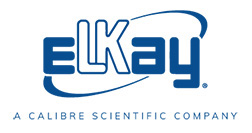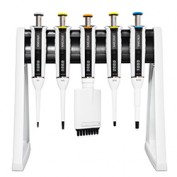
What you need to know about new ISO 8655:2022 Pipette Calibration and Standards

The new ISO 8655:2022 contains requirements for producing and in-use control of piston-operated volumetric apparatus (POVA).
Your pipette performance can deteriorate over time due to many factors, including drift of calibration, contamination, part wear and leakage. To ensure you maintain precision and accuracy, pipette calibration must be undertaken at regular intervals.
Here at Elkay Laboratory Products, we are pleased to offer an ISO 8655:2022 Pipette Calibration Service. Contact your Regional Account Manager to find out more.
POVA testing and calibration
-
Calibration and testing operations allow the user the identify any difference between the desired volume of the POVA and the actual delivered volume
-
Measurement results are only comparable under the same conditions
-
Variables that affect liquid properties must be controlled to ensure valid comparisons, POVA testing and calibration
Factors to consider when determining calibration or test intervals
-
Liquid handling process
-
Number of users
-
Frequency of use
-
Manufacturer information
-
Type of liquid delivered and its vapours
-
Risk of application
-
Acceptable maximum permissible errors
What’s new in ISO 8655:2022?
Two different reference measurement procedures for volume determination:
-
Gravimetric (Part 6)
-
Photometric (Part 8)
ISO 8655:2022 Parts 2, 6 and 7 require tolerances for the nominal value, 50% of nominal volume, and 10% of nominal volume. Tests must be done with minimum 10 repetitions per tested volume and at 3 points, minimum.
Part 6 introduces the new minimum requirements for balances used for gravimetric calibration: now asking for lower readabilities for pipettes up to 200 μl*.
Part 7 A.2 allows for deviations in test liquid and volumes.
Part 9 states before a pipette tip is placed on the market, the manufacturer must prove that the whole system (pipette and tip) fulfils the requirements and maximum permissible errors of the new ISO 8655.
What’s the difference between ISO 8655 and ISO 17025?
ISO 8655 describes how the calibration of a POVA is performed, while ISO 17025 defines the requirements a calibration laboratory must meet to achieve valid calibration results.
For a quotation of our ISO 8655:2022 Pipette Calibration Service, or for more information, please get in contact with your Regional Account Manager.
*Two changes up to 20µl nominal volume.

